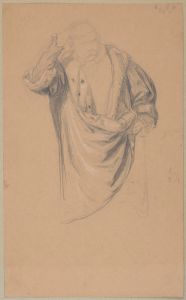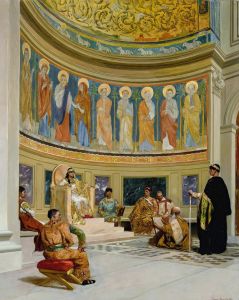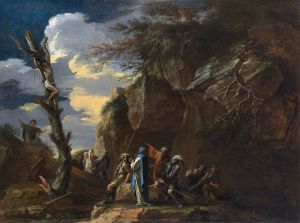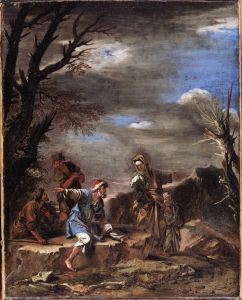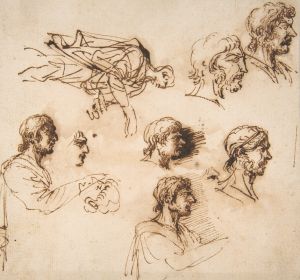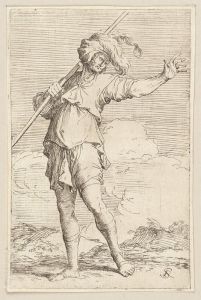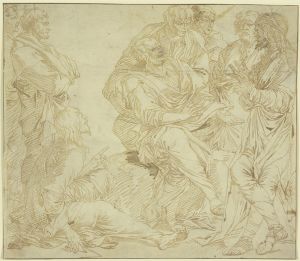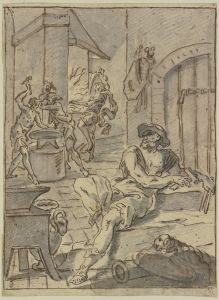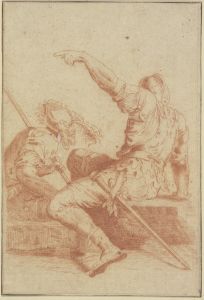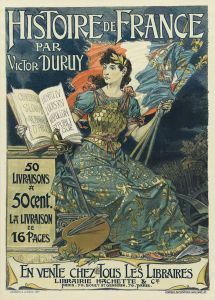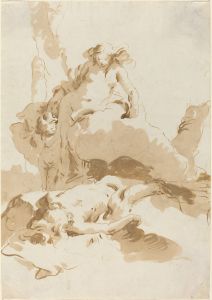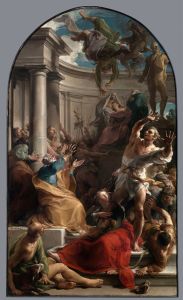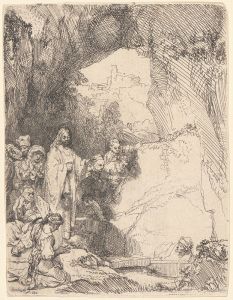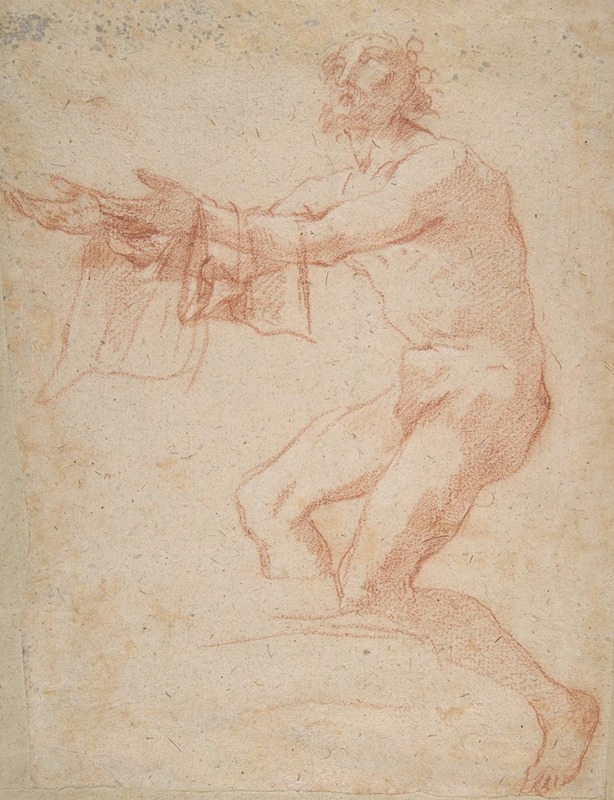
Study for a Raising of Lazarus
A hand-painted replica of Salvator Rosa’s masterpiece Study for a Raising of Lazarus, meticulously crafted by professional artists to capture the true essence of the original. Each piece is created with museum-quality canvas and rare mineral pigments, carefully painted by experienced artists with delicate brushstrokes and rich, layered colors to perfectly recreate the texture of the original artwork. Unlike machine-printed reproductions, this hand-painted version brings the painting to life, infused with the artist’s emotions and skill in every stroke. Whether for personal collection or home decoration, it instantly elevates the artistic atmosphere of any space.
Salvator Rosa's Study for a Raising of Lazarus is a preparatory drawing attributed to the Italian Baroque artist Salvator Rosa (1615–1673). Rosa was known for his dramatic and often unconventional approach to painting, as well as his work as a poet and printmaker. While his oeuvre includes a variety of subjects, such as landscapes, battle scenes, and allegorical works, he also created religious compositions, among which the theme of the Raising of Lazarus holds significance.
The drawing is believed to be a study for a larger, now-lost or unidentified painting depicting the biblical story of the Raising of Lazarus, as recounted in the Gospel of John (11:1–44). This narrative describes Jesus miraculously bringing Lazarus back to life four days after his death, a moment that has been a popular subject in Christian art for centuries. Rosa's interpretation of the scene, based on the study, likely emphasized the dramatic and emotional intensity of the event, consistent with his Baroque style.
The Study for a Raising of Lazarus showcases Rosa's skill in composition and his ability to convey dynamic movement and emotion. The drawing is executed in a manner typical of preparatory works, with a focus on the arrangement of figures and the overall structure of the scene. It reflects Rosa's interest in chiaroscuro, the dramatic interplay of light and shadow, which he often used to heighten the emotional impact of his works.
The exact date of the drawing is not definitively known, but it is generally placed within Rosa's mature period, when he was actively producing religious and historical works. The medium of the study is pen and ink with wash, a common technique for preparatory sketches during the Baroque period. The drawing is currently housed in a museum or private collection, though specific details about its provenance and current location are not widely documented.
As with many of Rosa's works, Study for a Raising of Lazarus reflects his distinctive artistic voice, which often diverged from the more polished and idealized styles of his contemporaries. His approach to religious themes frequently incorporated a sense of raw emotion and dramatic tension, aligning with the broader Baroque aesthetic while maintaining his unique perspective.
Further details about the intended final painting or its reception remain unclear, as no definitive records or surviving works directly linked to this study have been identified. Rosa's legacy, however, continues to be celebrated for his innovative contributions to 17th-century art, and works like Study for a Raising of Lazarus provide valuable insight into his creative process.





